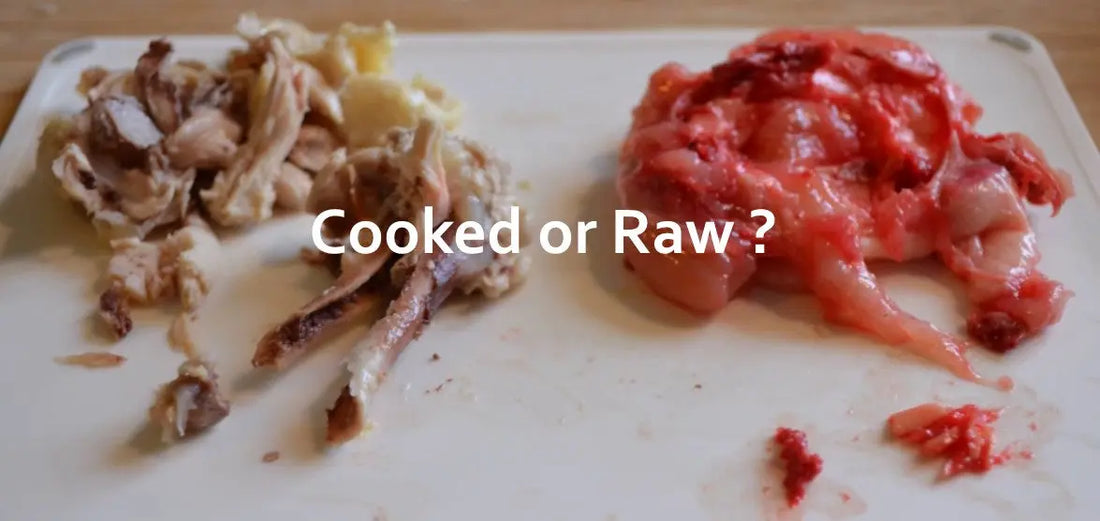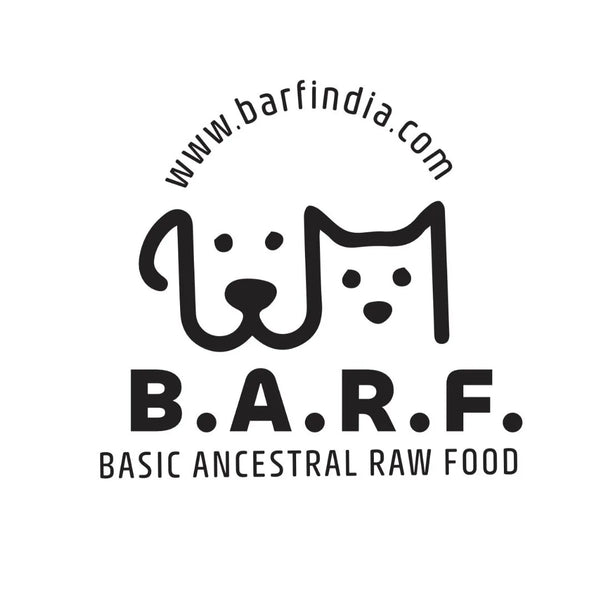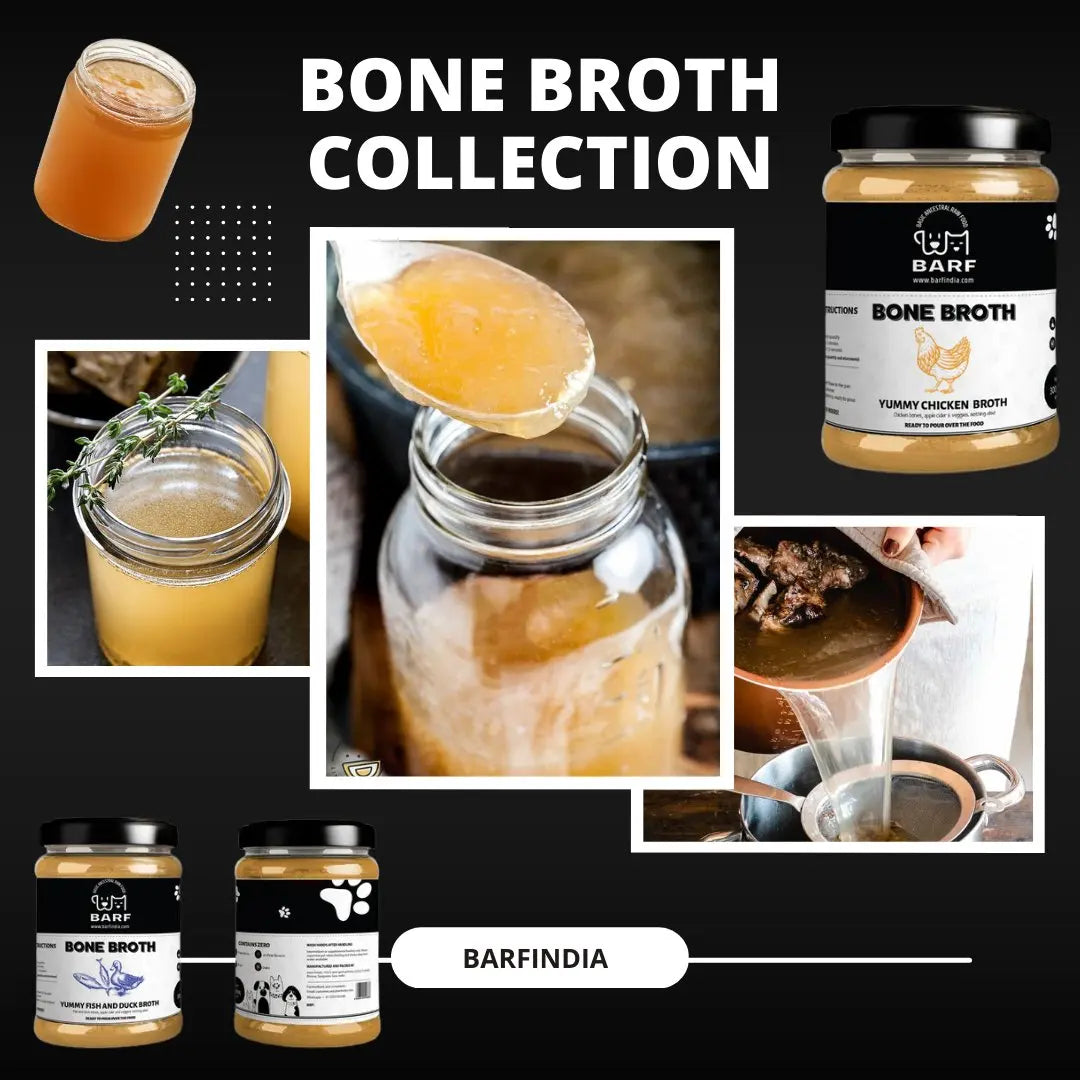
Cooked or Raw?
B.A.R.F. India AdministratorCooked or Raw ?
We all want the best for our best friend, our dog - Cooked or Raw ? !! That is why we prepare the meals for him using the best ingredients (or do we??) and cook the same and give him. We all do know that the dog depends on us-his foster parents, to feed him. So the multi-million dollar question-do we feed them right?
What do we feed our dogs?
What do we actually feed our dogs? I hear so many people say, roti and milk, rice and dal, rice, meat waste and vegetables. People do say that their dogs have lived off that for years without any issues or do they really? Cooked food at many occasions, if not always, suffers from excesses or deficiencies. Essential fatty acids, vitamins, minerals, and natural antioxidants are some of the nutrients that are found deficient or in excess. The most common formula used in home cooked food is rice, vegetables, and some meat thrown in which are all cooked up into a stew and served to the dog. This formula is nearly similar to that of the pet food companies - a grain based diet with meat (rendered meat in most cases) and vegetables. And that is why most of the nutritional problems associated with commercial pet foods hold true for home cooked food.
In my opinion, we must focus on foods for the dog that:
- Have good quality, and are nutrient-dense ingredients.
- Formulate the meals in a way that provides complete and balanced nutrition.
- Prepare the meals in a way that enables the nutrients to be most readily absorbed and least damaged.
From all my years in the nutrition industry I have come to understand the fact that cooked food lacks all the benefits of raw food. Cooked food is deficient in vitamins, minerals, and enzymes, because the very act of cooking destroys or alters much of them. This decreases the bio-availability of these valuable chemicals and makes them less available to the animal. This is why these things have to be added back into pet foods and why a variety of supplements need to be added to home-cooked pet food—and why a variety of species inappropriate items are utilized as ingredients in these meals!
Allergies in dogs?
There have been many instances where we have seen that with the growing number of food allergies which pets have, the pet food industry has been becoming more and more creative, trying to find new protein and grain sources to make new 'hypoallergenic' kibbles. Have they even once considered WHY the pets were having allergy problems to the ingredients in their foods to begin with (Probably. But will they tell us that they know why? Probably not. Where's the profit in that?)? Ironically enough, pets switched to a raw diet can often eat the same meats that caused their allergies originally, because the meats are raw and not cooked (Clark, W.R. 1995. Hypersensitivity and Allergy, in At War Within: The double edged sword of immunity, Oxford University Press, New York. pg 88.). The cooking process changes the protein structures, and it is these changed, cooked proteins to which the body has an allergic reaction.
Feeding a natural diet:
I have also noted and acknowledged that even though many people want to match the food they feed their dog as closely as possible to the animal's ancestral diet, they have experienced difficulties in doing so:
- Insufficient freezer space,
- cost,
- nutritional imbalances in poorly designed homemade diets, and
- issues sourcing healthy ingredients and commercially available raw diets have caused many pet owners to look for more practical, convenient options.
And pet food manufacturers are trying to fill the gap with low-carbohydrate, grain-free kibble diets. Pet food companies claim these formulas are a convenient alternative to raw food or home-made cooked food, but nothing could be further from the truth. Why?
Harmful preservatives in processed food:
A major argument by Dr Karen Becker which I quote here, "One reason is because an essential feature of actual raw food is that if it's left out on the counter, it will soon be covered with maggots. No raw food can be kept at room temperature because by the end of the day, it will be putrefied and disgusting. Leave a bowl of kibble out on the counter in the morning, and guess what you'll find late in the evening? That same bowl of food, unchanged. It was dead in the morning, and it's still dead." Kibble is processed, which means the ingredients are no longer raw. And they have been thoroughly cooked through the extrusion process, which means they're no longer full of the moisture that is critical for normal metabolic balance in cats and dogs. The bottom line is there's no way the heat-processed kibble can be an alternative to raw food. The home cooked food sometimes comes with its own set of assumptions and nightmares. The preparation of these diets can indeed be a nightmare in terms of keeping them balanced and adequate. Most people make one or more wrong assumptions during the course of feeding home-prepared foods. Chicken thighs are not the same as chicken breasts; fat and protein content vary considerably. How much skin do you include in your diet? What if you change from chicken to turkey? Were you baking and now are poaching? Aren’t they the same? No. Substitution of ingredients may seem fine to the chef, but not to the pet’s well-being.
DIY Raw diets:
If you thought you could just throw some chicken and brown rice together, change up the veggies from time to time, throw in a vitamin and some calcium, and go feed Jack a meal made for a dog-king, think again. Because these diets become costly, many pet parents begin to omit supplements that may be extremely important. The list of seemingly small assumptions can lead to big deficiencies. Surveys and discussions with pet-parents indicate that about a third cook the meals for their pets, and two-thirds feed raw. Both groups see improvements versus commercial kibble, but raw feeders have seen dramatic improvements in their dogs. So when making a choice, don’t get too fixated on the issue of raw or cooked. The important thing is to feed
, whether raw or cooked, and avoid the use of processed kibble.



